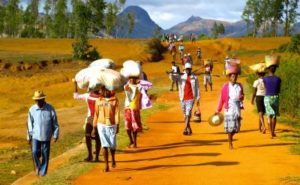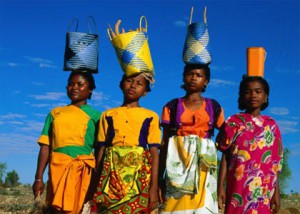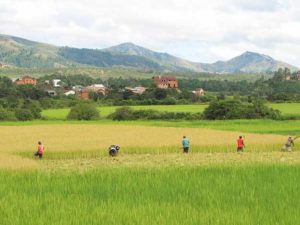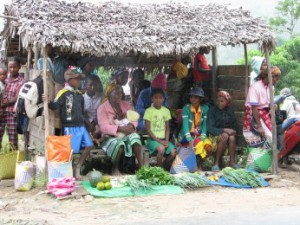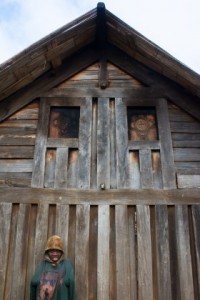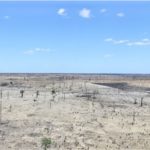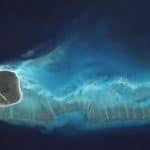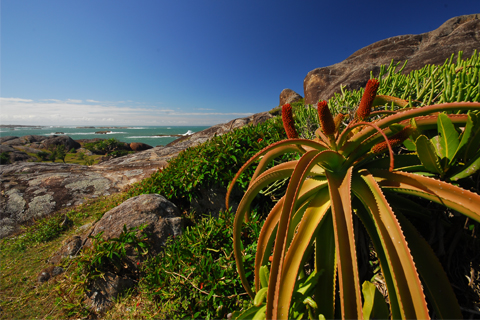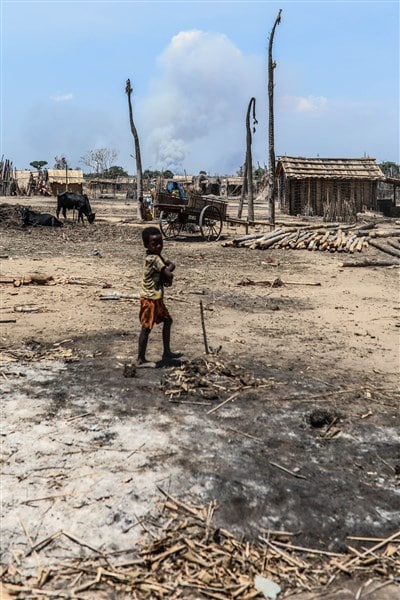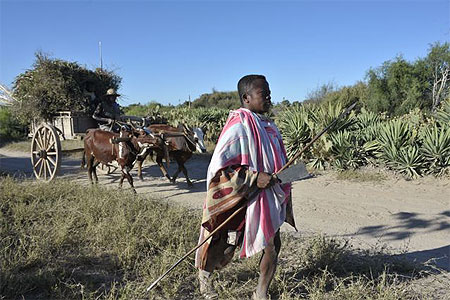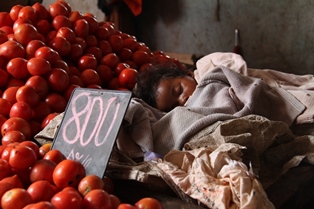The serenity of the population
Agriculture is the basis of livelihood for the majority of Madagascans and sufficiently characterizes the image of the island. There is hardly any industry, and even large cities seem more like sprawling settlements to European visitors. Not even Madagascar's capital Antananarivo offers a classic urban image, but rises only in the interstices of the city. vast rice fields and illustrates the fact that almost 80% of the population live from agriculture. Rice cultivation in particular plays a major role in agriculture. Inform yourself under Food and drink in Madagascar about the daily diet, the role that rice plays in it and the importance of the Zebu on Madagascar.
Agriculture as the basis of daily life
Since agriculture plays such an important role in the basic livelihood of the Malagasy, it may come as a surprise that only 20% of the country's land is suitable for agriculture at all. Especially the cultivation of wet rice is problematic under the given climatic conditions, although the famous rice terraces of the highlandsThe rice fields, which are mainly planted by the Betsileo, offer an impressive panorama. However, since rice is an integral part of the diet of the population, they invest considerable effort in all parts of the country to make rice cultivation possible. It has already been proven that the island provides the conditions for the cultivation of numerous other plants. Thus predominates above all in the highlands a rather temperate climatewhich allows practically all crops to thrive that are also native to Europe, such as apples, pears, citrus fruits and vegetables of all kinds. Exotic products such as pineapple and papaya can also be grown in the highlands. The hot, coastal regions, on the other hand, reveal all the diversity that was once known as the precious "colonial goods found their way to Europe: here you can find small vanilla, coconut and lychee plantations, alongside Cloves, sugar cane, Fine cocoa, and Coffee. The plantations can be used at a Individual trip or one of the Tours along the east coast be marveled at.
Madagascar's vibrant market culture
The harvested products are sold primarily at markets. Almost every place has at least a small market culture. The variety of agricultural makes a visit to a market every time anew a feast for all the senses. Fresh fruit and vegetables are offered here in all shapes and colors. There, the circumstances that determine the everyday life of the people and what they produce can be best observed and understood. Where necessary, the Malagasy markets are also "specialized" or spatially separated. Thus, until a few years ago, the capital Antananarivo had probably the largest open-air market in the world, the legendary Zoma from Tana. However, due to its size, the Zoma could hardly be controlled by the authorities. Since the administration both lost track of the booth fees to be paid and could no longer adequately crack down on pickpockets, the Zoma was regulated, limited and, on top of that, turned into divided into different "departments.
There are also special markets in the countryside, of which the livestock markets are the most interesting. Especially zebu markets, as they are regularly held in Ambositra, Ambalavao, Belo-sur-Tsiribihina or Ambovombe, attract a large crowd of two- and four-legged actors every time. To visit different markets, for example, a 14-day trip from Antananarivo to Tulear is a good option.
The Malagasy: Hospitality and serenity
The lives of most Malagasy take place within a fairly small radius of perhaps 30 kilometers in diameter: people find everything they need to grow up and live here in this limited environment. The school system in Madagascar - although completely underfunded and underdeveloped - is organized throughout the country. Nevertheless, most Madagascans can only receive the minimum level of education. More than from school, the country's inhabitants learn from their families. This is also how they operate their agriculture. Sustainable concepts of agriculture can therefore only slowly establish themselves on the island.
Even though the Malagasy peoples are rather introverted and live among themselves, they are very friendly towards strangers. very friendly and open minded. Hospitality is very widespread and meals are generously shared with visitors. The dwellings that the stranger enters in the process, or even sees while passing through, offer a Reflection of life circumstancesIn the highlands, one finds mainly multi-story brick houses, whereas in the coastal regions, huts are predominantly made of very perishable raw materials such as palm leaves or straw and bark. Most Malagasy lead a life on the edge of subsistence. Hardly anyone possesses the modern achievements of civilized society. However, it is precisely this lack that forms the basis of those serenitywhich characterizes most Malagasy. For Hustle, haste and hasty action are practically unknown here. There is always enough time, at least it costs nothing, and this peculiar melange of poverty, serenity and relaxation captivates many visitors to Madagascar.

